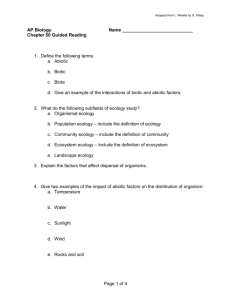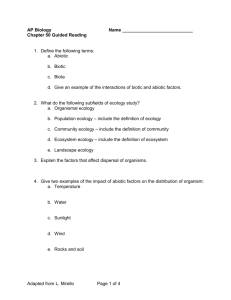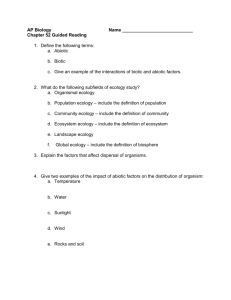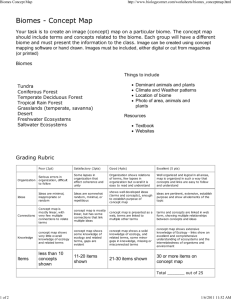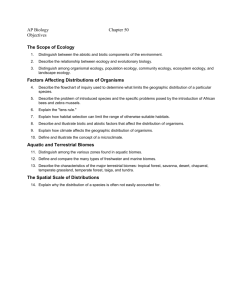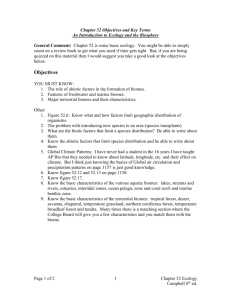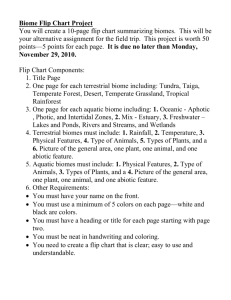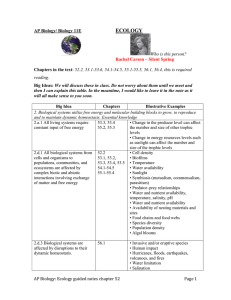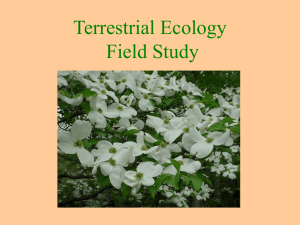AP Biology - Wild about Bio
advertisement
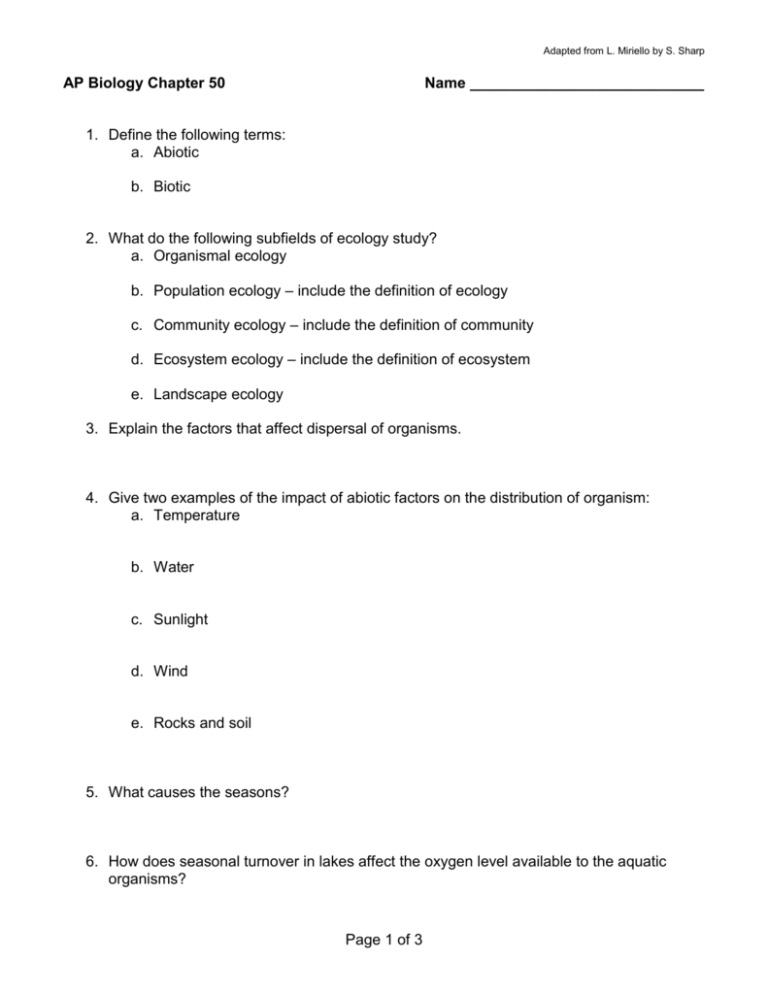
Adapted from L. Miriello by S. Sharp AP Biology Chapter 50 Name ____________________________ 1. Define the following terms: a. Abiotic b. Biotic 2. What do the following subfields of ecology study? a. Organismal ecology b. Population ecology – include the definition of ecology c. Community ecology – include the definition of community d. Ecosystem ecology – include the definition of ecosystem e. Landscape ecology 3. Explain the factors that affect dispersal of organisms. 4. Give two examples of the impact of abiotic factors on the distribution of organism: a. Temperature b. Water c. Sunlight d. Wind e. Rocks and soil 5. What causes the seasons? 6. How does seasonal turnover in lakes affect the oxygen level available to the aquatic organisms? Page 1 of 3 Adapted from L. Miriello by S. Sharp 7. Label the below listed diagrams of aquatic and marine environments – also include a written description of the zone. a. Aquatic b. Marine 8. Describe the following aquatic biomes – write enough to use this guided reading as a study guide for the test. a. Lakes b. Wetlands c. Streams and Rivers d. Estuaries e. Intertidal Zones Page 2 of 3 Adapted from L. Miriello by S. Sharp f. Ocean Pelagic Biome g. Coral Reef h. Marine Benthic Zone 9. How does temperature and precipitation impact the distribution of terrestrial biomes? 10. Construct a table of the major terrestrial biomes (Tropical forest, Desert, Savanna, Chaparral, Temperate grassland, Coniferous forest, Temperate broadleaf forest, Tundra) . Your table should include: a. Name of each major terrestrial biome b. Area of the world where the biome is located c. Climatic conditions (main abiotic factors) d. Primary types of vegetation e. Primary consumers (list examples of several trophic levels) Page 3 of 3
